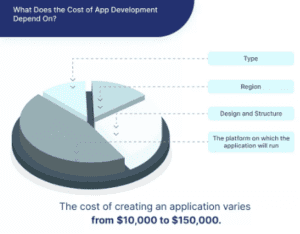The software development process is analogous to the construction of a house. If the foundation is sturdy, it will withstand the test of time and fulfill the demands of the client for the duration of its existence. So how can a developer ensure that their program has a solid foundation? The solution is in the architecture of the program.
Some decisions must be taken early in the construction process while building a house. These considerations include the materials used, the design of the house, the internal architecture, and so on. These selections are critical since they determine the house’s durability, strength, and quality. Furthermore, with a solid base, adding extra levels on top becomes simple.
Similarly, software architecture makes judgments on critical characteristics that will define the internal quality of software in the long run. This occurs early in the software development cycle (after requirements analysis) since subsequent development is dependent on it. In this article, we’ll share with you the fundamentals of software architecture.
What Is Software Architecture?
A system’s software architecture illustrates the organization or structure of the system and gives an explanation of how it acts. A system is a collection of components that perform a given function or set of functions. In other words, software architecture offers a solid basis for building software. A set of architectural considerations and trade-offs influence the system’s quality, performance, maintainability, and overall success. Failure to consider basic difficulties and long-term effects might jeopardize your system.
In contemporary systems, there are several high-level architectural patterns and ideas that are widely employed. Architectural styles are commonly used to describe this. A software system’s architecture is rarely constrained to a particular architectural style. Instead, a variety of styles is frequently used to create the entire system.
Why Does Software Architecture Matter?
A structured software architecture helps to assure the internal quality of the software’s lifespan. Consider two comparable items. Both were released within a month of each other, with plans to add new features after three months.
There are two scenarios:
- Product A will be available in January 2021. Because the development team aims to release and monopolize the market as soon as possible, this product has a sloppy source code.
- Product B will be available in March 2021. This project features a well-structured and ordered software architecture. Early in the process, the development team works on design and architectural decisions, prioritizing quality above a hurried launch.
Which Product will be more successful: A or B?
Product A may initially monopolize the market and convert better. However, product uptake will ultimately slow as a result of the clumsy code, which will lead to a buildup of technical debt. These backlogs will make it difficult to roll out fresh upgrades and bug fixes on the fly.
Product B may face a market entrance gap, but maintaining a faster delivery cadence will be easier. The customer’s demands will be met without disrupting the user experience, resulting in a greater victory.
Five Most Used Software Architectures
Layered (n-tier) architecture
This is perhaps the most commonly used strategy because it is generally constructed around the database, and many commercial applications naturally lend themselves to storing information in tables.
This is almost a self-fulfilling prophecy. Many of the most popular and finest software frameworks, like Java EE, Drupal, and Express, were designed with this structure in mind, and as a result, many of the applications created with them naturally have a layered architecture.
The code is structured in such a manner that data enters the top layer and proceeds down each layer until it reaches the bottom, which is generally a database. Each layer has a distinct duty along the route, such as validating the data for the correctness or reformatting the numbers to keep them consistent. It is typical for multiple programmers to work on various levels independently.
The MVC, Model-View-Controller structure, which is the standard software development approach provided by the majority of popular web frameworks, is unmistakably a layered design. The model layer, which sits just above the database, frequently contains business logic and information on the sorts of data in the database.
The view layer is at the top and is often composed of CSS, JavaScript, and HTML with dynamic embedded code. The controller is in the middle, with numerous rules and techniques for altering data as it moves between the display and the model.
The advantage of a layered architecture is separation, which means that each layer can focus solely on its role. This makes it:
- Testable
- Maintainable
- Easy to assign separate “roles”
- Easy to update and improve layers separately
Layered architectures that are properly designed will have separated layers that are not affected by changes in other levels, allowing for simpler refactoring. This design may also include additional open layers, such as a service layer, which can be used to access shared services exclusively in the business layer while also being skipped for speed.
The architect’s largest issue is dividing duties and designing various levels. When the requirements closely match the pattern, the layers will be simple to split and allocate to various programmers.
Drawbacks:
- If the source code is disorganized and modules do not have defined responsibilities or relationships, it might turn into a “big ball of mud.”
- Because of what some developers refer to as the “sinkhole anti-pattern,” code might become sluggish. Much of the code can be devoted to just passing data between levels with no logic.
- Layer isolation, while crucial for the design, might make it difficult to grasp the architecture without understanding every module.
- Coders can skip levels in order to generate tight coupling and a logical jumble with complicated interdependencies.
- Because monolithic deployment is frequently necessary, minor modifications may need a complete redeployment of the program.
Best for:
- New apps must be developed fast.
- Enterprise or corporate apps must reflect typical IT organizations and operations.
- Teams are novice developers who are unfamiliar with different architectures.
- Applications that have stringent maintainability and testability requirements.

Event-driven architecture
Many programs devote the majority of their time just waiting for something to happen. This is especially true for computers that interact with humans, although it is also widespread in domains such as networks. Sometimes there is data that has to be processed, and sometimes there isn’t.
The event-driven architecture aids with this by constructing a central unit that takes all data and then delegates it to the individual modules that handle the specific kind. This handoff is referred to as a “event,” and it is delegated to the code associated with that kind.
Writing tiny modules that respond to events such as mouse clicks or keystrokes is required when programming a web page using JavaScript. The browser orchestrates all input and ensures that only the right code sees the right events. In the browser, many different sorts of events are prevalent, but modules only interact with the events that involve them. This is in contrast to the layered design, in which all data normally passes through all levels.
Overall, event-driven architectures:
- Easily adaptable to complex, often chaotic, environments
- Extendable when new event types appear
- Scale easily
Drawbacks:
- Testing can become complicated if the components interact with one another. Individual modules can be evaluated separately, but the interactions between them can only be examined in a fully operational system.
- It might be challenging to organize error handling, especially when many modules must handle the same events.
- In the event that a module fails, the central unit must have a backup plan in place.
- Messaging overhead can impede processing performance, particularly when the central unit must buffer messages that arrive in bursts.
- Creating a systemwide data structure for events can be difficult when the events have extremely distinct requirements.
- Because the modules are so detached and autonomous, maintaining a transaction-based approach for consistency is problematic.
Best for:
- Asynchronous data flow in asynchronous systems.
- Applications in which individual data blocks communicate with only a subset of the several components.
- Interactions with users.
Microkernel Architecture
Many applications contain a core set of actions that are repeated in various patterns depending on the input and the job at hand. Eclipse, a popular development tool, for example, will open files, annotate them, edit them, and launch background processors. The tool is well-known for doing all of these tasks with Java code and then compiling and running the code when a button is pressed.
In this scenario, the microkernel contains the fundamental procedures for viewing and editing files. The Java compiler is simply an add-on component that is used to support the fundamental functionality of the microkernel. Various programmers have modified Eclipse to write code in other languages using different compilers. Many do not even utilize the Java compiler, yet they all use the same fundamental file editing and annotation procedures.
The extra features that are put on top are commonly referred to as plug-ins. Instead, many people refer to this expandable method as a plug-in architecture. The approach is to put certain fundamental duties inside the microkernel, such as asking for a name or checking on payment. The various business units may then develop plug-ins for the various sorts of claims by connecting the rules with calls to the kernel’s core functions.
Drawbacks:
- Choosing what belongs in the microkernel is often an art rather than science. It should keep the commonly used code.
- The plug-ins must include a significant amount of handshaking code to notify the microkernel that the plug-in is installed and ready to use.
- When a number of plug-ins rely on the microkernel, changing it can be difficult, if not impossible. The only way to fix this is to alter the plug-ins as well.
- Choosing the appropriate granularity for the kernel functions is challenging in preparation but nearly hard to adjust later in the game.
Best for:
- Tools that are used by a wide range of people.
- Applications have a distinct separation between fundamental routines and higher order rules.
- Applications that have a fixed set of core procedures and a dynamic collection of rules that must be updated on a regular basis.

Microservices Architecture
Software may be like a baby elephant: while it’s small, it’s charming and enjoyable, but when it grows up, it’s tough to control and resistant to change. The microservice architecture is intended to assist developers in preventing their children from growing up to be large, monolithic, and inflexible. Instead of creating a single large program, the idea is to construct a lot of small programs and then create a new small program whenever a new feature is added. Consider a herd of guinea pigs.
“If you go into your iPad and look at Netflix’s UI, everything on that interface comes from a separate source,” Richards points out. The list of your favorites, your ratings for particular films, and your accounting information are all sent in distinct batches by different providers. It’s as if Netflix were a network of dozens of tiny websites that happen to show themselves as a single service.
This strategy is comparable to the event-driven and microkernel approaches, however it is mostly used when the various jobs can be readily separated. In many circumstances, distinct jobs may need varying amounts of processing and may be used in different ways. On Friday and Saturday evenings, the servers that distribute Netflix material are pushed significantly harder, so they must be prepared to scale up. The Netflix cloud can scale them up and down separately as demand changes by establishing them as different services.
Drawbacks:
- The services must be mostly self-contained, or else contact will cause the cloud to become unbalanced.
- Not all apps can be simply divided into separate pieces.
- When tasks are distributed over several microservices, performance might suffer. The expenses of communication can be substantial.
- When there are too many microservices, users may become confused because certain sections of the web page show much later than others.
Best for:
- Websites and applications with small elements.
- Corporate data centers with clearly defined perimeters.
- Development teams that are dispersed, frequently across the world.
Space-based Architecture
Many websites are constructed around a database, and they work well as long as the database can handle the traffic. However, when usage spikes and the database is unable to keep up with the ongoing task of producing a record of transactions, the entire website crashes. The space-based architecture is intended to avoid functional collapse under heavy load by distributing processing and storage over numerous servers.
The data is distributed throughout the nodes. Some architects prefer the more equivocal phrase “cloud architecture.” The term “space-based” refers to the “tuple space” of the users, which is divided to divide the work among the nodes. It’s all in-memory things. By removing the database, the space-based design accommodates items with unanticipated surges.
Storing information in RAM speeds up numerous activities, and spreading out storage with processing may simplify many simple tasks. However, distributed architecture can make some sorts of analysis more difficult. Computations that must be distributed throughout the full data set, such as calculating an average or performing a statistical analysis, must be divided into sub-jobs, distributed across all nodes, and then aggregated when completed.
Drawbacks:
- With RAM databases, transactional support is more challenging.
- It might be difficult to generate enough load to test the system, however, individual nodes can be checked independently.
- It is difficult to develop the skills required to cache data for speed without damaging numerous copies.
Best for:
- Click streams and user logs are examples of high-volume data.
- Low-value data that may be lost seldom without major ramifications—in other words, not bank transactions.
- Social media networks





